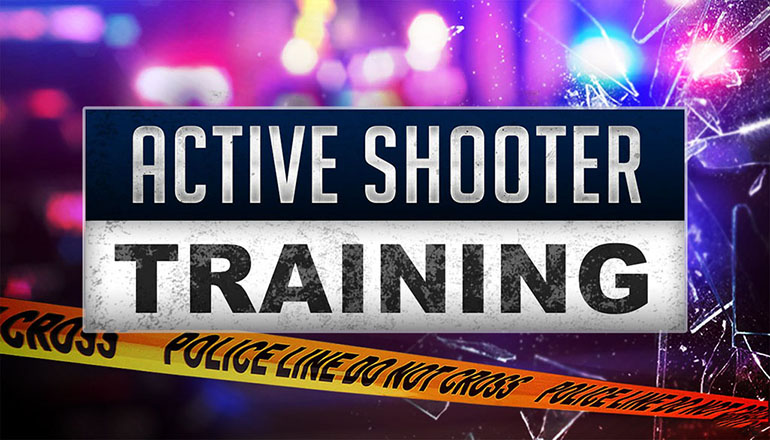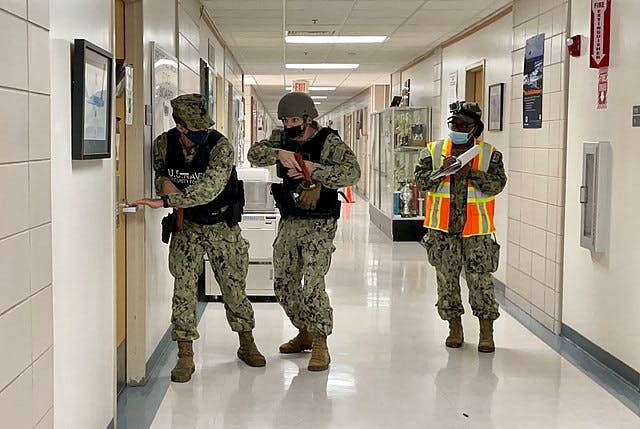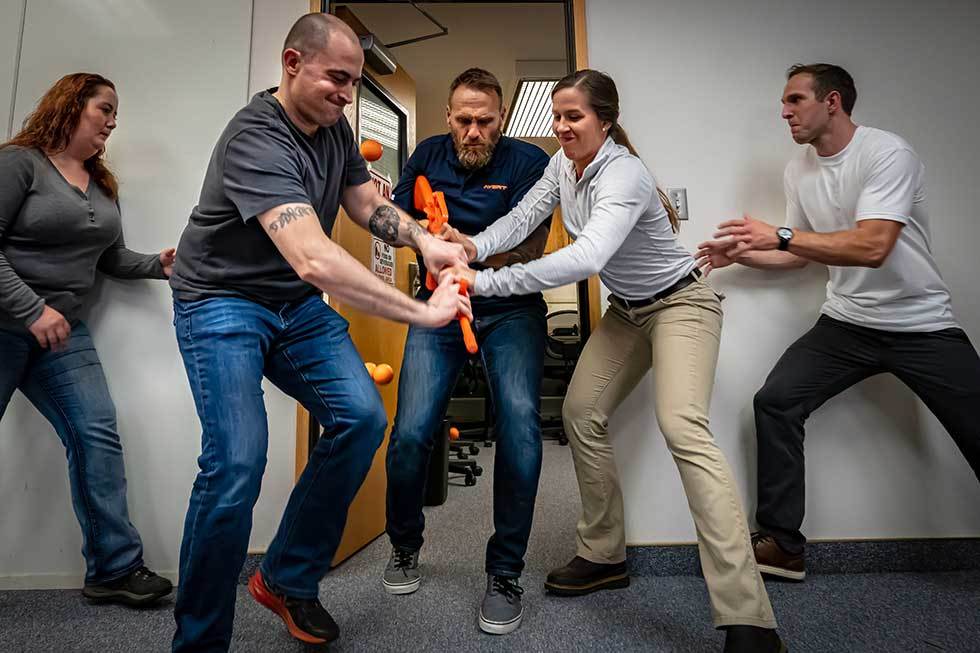Exploring the Secret Parts and Purposes of Effective Active Shooter Training Programs
Energetic shooter training programs are critical in outfitting individuals and companies with the needed abilities to react successfully to potential dangers. These programs incorporate vital components, such as the "Run, Hide, Fight" technique, sensible scenario simulations, and interaction methods, promoting an atmosphere of readiness. Moreover, they highlight mental durability to help individuals navigate high-stress situations. As we discover the complexities of these training programs, it becomes obvious that understanding their extensive nature is crucial to improving security measures and feedback capabilities. What certain components absolutely specify their performance?
Importance of Active Shooter Training
Active shooter training programs are crucial for enhancing preparedness and action when faced with prospective risks. These programs intend to outfit individuals, companies, and areas with the knowledge and skills required to successfully react to energetic shooter scenarios. The increasing frequency and severity of such occurrences highlight the value of proactive procedures, as prompt and educated responses can dramatically alleviate damage.

In addition, these programs can help alleviate the anxiety and worry that typically come with conversations about potential dangers. By giving organized support and sensible approaches, individuals get confidence in their capability to react suitably. Eventually, the importance of energetic shooter training hinges on its prospective to save lives, decrease injuries, and grow a prepared and resistant community efficient in facing unforeseen obstacles.
Key Elements of Training Programs
Effective active shooter training programs commonly include a number of crucial elements created to prepare individuals for real-world circumstances. The initial component is detailed education on the nature of active shooter cases, consisting of statistics, situation research studies, and mental aspects that affect assailants. This academic structure is critical for promoting recognition and understanding amongst participants.
Following, programs typically consist of training on personal safety and security steps, emphasizing the "Run, Hide, Fight" approach. Individuals find out exactly how to evaluate their setting, make quick decisions, and take suitable actions during a situation. In addition, the incorporation of effective communication skills is important, as participants have to comprehend how to report incidents and share vital information with police.
An additional essential part is the participation of legislation enforcement or security specialists, who provide insights into tactical responses and the significance of participation throughout a crisis. Moreover, programs need to resolve the emotional results of an active shooter scenario, supplying approaches for dealing and recovery.
Lastly, continuous training and refresher course training courses are essential to make certain that knowledge continues to be existing and individuals feel great in their abilities. With each other, these key components produce a well-shaped training program that furnishes individuals to respond successfully to an energetic shooter event.
Realistic Situation Simulations
Practical scenario simulations are an important aspect of active shooter training programs, supplying participants with the opportunity to take part advice in hands-on method that mirrors prospective real-life situations. These simulations boost the training experience by developing an immersive environment where people can use academic understanding in sensible setups.
Via making use of role-playing, mock circumstances, and specialized training centers, individuals experience the immediate difficulties and stressors related to an energetic shooter case. This method of training promotes fast decision-making, synergy, and the application of security methods under pressure. It permits responders to establish vital abilities such as situational understanding, risk evaluation, and efficient evacuation treatments.
Furthermore, reasonable simulations aid to recognize potential weak points in participants' feedbacks, allowing fitness instructors to supply Recommended Site targeted comments and boost general preparedness. The consolidation of differing scenarios, including various places and attacker accounts, additionally enhances the training experience, making sure that individuals are well-equipped to take care of a series of possible situations.
Ultimately, these simulations offer not just to instruct but additionally to build self-confidence amongst individuals, promoting a feeling of preparedness that is crucial for reliable emergency situation feedback despite an active shooter threat. active shooter training.
Interaction Methods in Training
Clear communication is crucial in active shooter training programs, as it directly influences the performance of response efforts during a situation. Training individuals have to comprehend the methods and procedures that will certainly assist their activities if faced with an energetic shooter situation. Developing clear lines of interaction makes sure that all people entailed can relay details without delay and accurately.

In addition, training programs should highlight the value of energetic listening - active shooter training. Individuals have to be educated to analyze and reply to details properly, lessening misconceptions that could lead to dangerous scenarios. Regular comments sessions post-training can likewise refine interaction strategies, making sure that all participants feel encouraged to share their experiences and pointers for enhancement. Ultimately, effective interaction approaches are important for preparing individuals to respond emphatically and cohesively despite an energetic shooter case.
Mental Preparedness Methods
Emotional readiness strategies are significantly identified as essential elements of active shooter training programs. These strategies intend to outfit people with the mental strength essential to react properly in high-stress circumstances. By fostering a frame of mind attuned to prospective risks, individuals can much better take care of fear, anxiety, and confusion throughout crucial cases.
Trick psychological readiness techniques consist of scenario-based training and anxiety inoculation workouts. Scenario-based training submerses participants in reasonable simulations that imitate the disorder of an active shooter over at this website occasion, enabling them to practice decision-making under stress. This direct exposure helps construct knowledge with emergency situation procedures, boosting second-nature feedbacks.
Tension inoculation involves progressive exposure to stress-inducing situations, enabling individuals to establish coping systems. This can consist of breathing exercises, visualization methods, and cognitive restructuring to reframe unfavorable ideas. By incorporating these methods, training programs can grow a feeling of confidence and control, which is essential in crisis circumstances.
Furthermore, post-incident emotional assistance is critical to resolve the emotional results of an energetic shooter occasion. Integrating psychological health and wellness sources into training programs not only prepares people for immediate reactions yet also promotes long-term emotional wellness, ultimately contributing to a more secure and more resistant environment.
Conclusion
